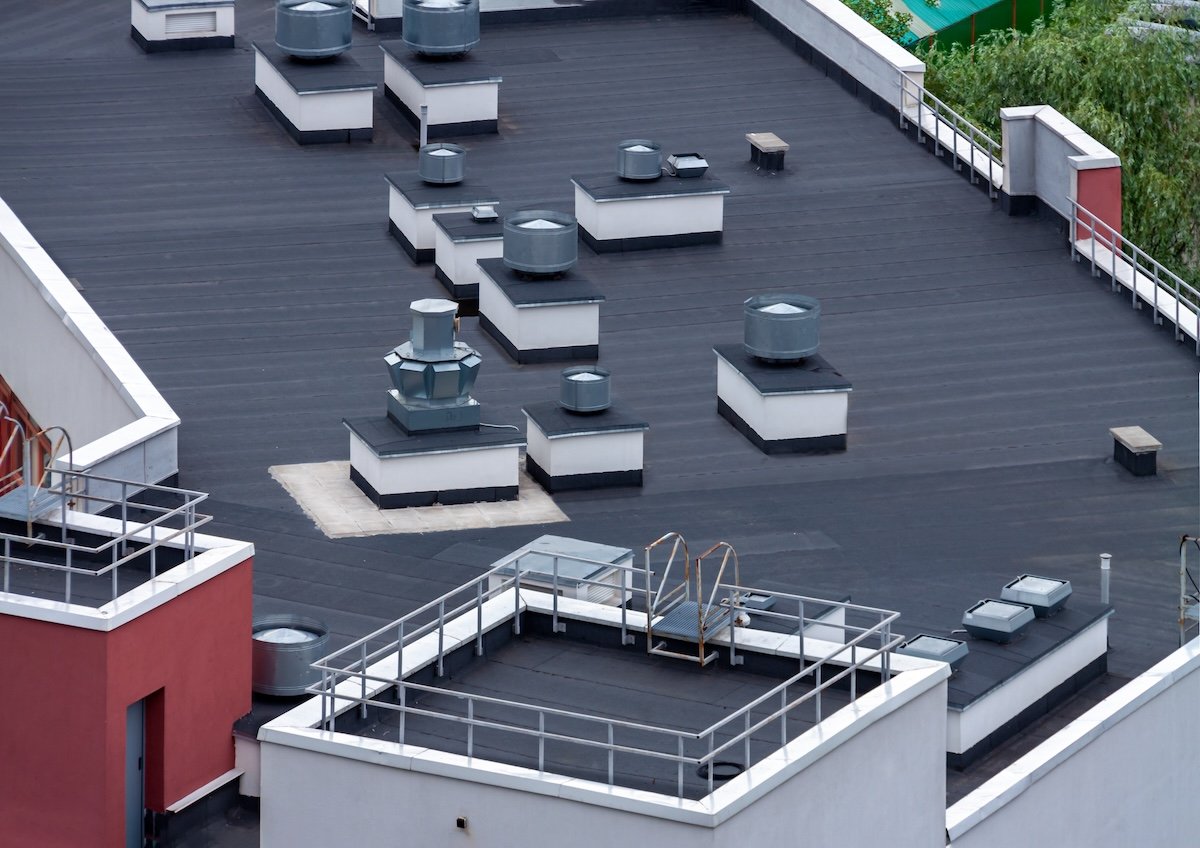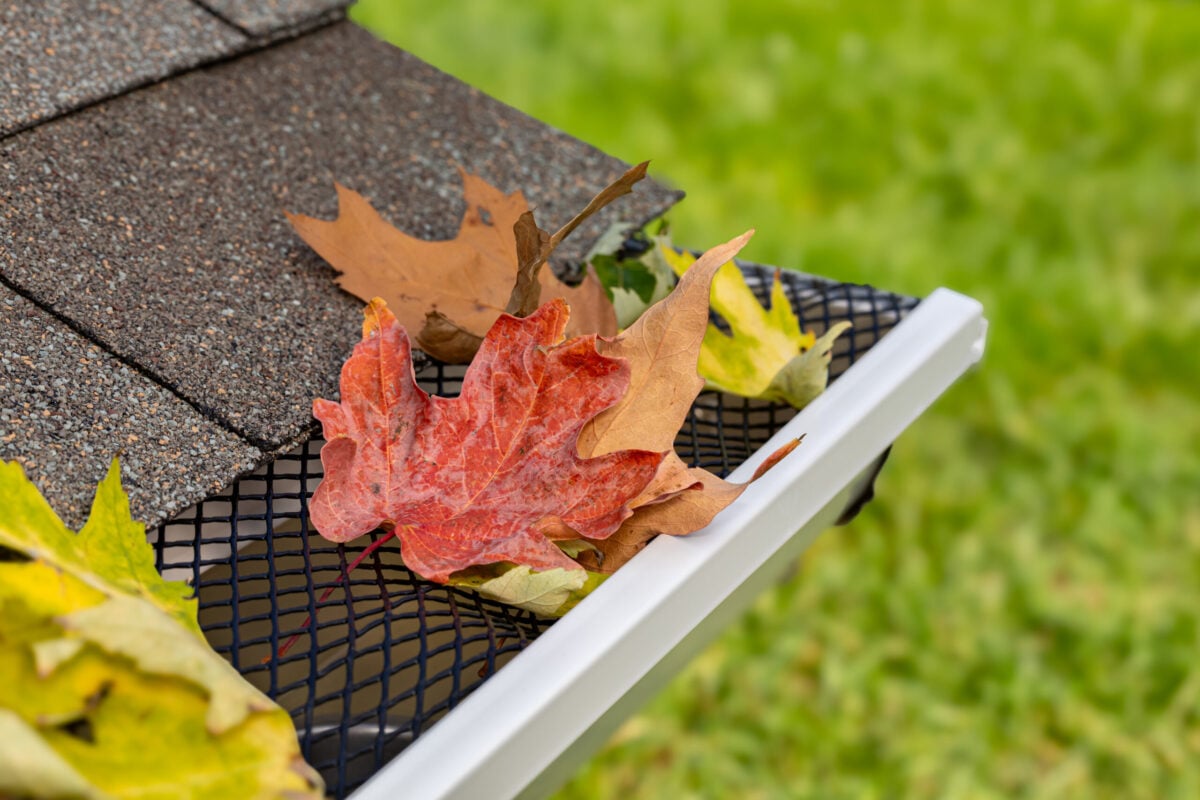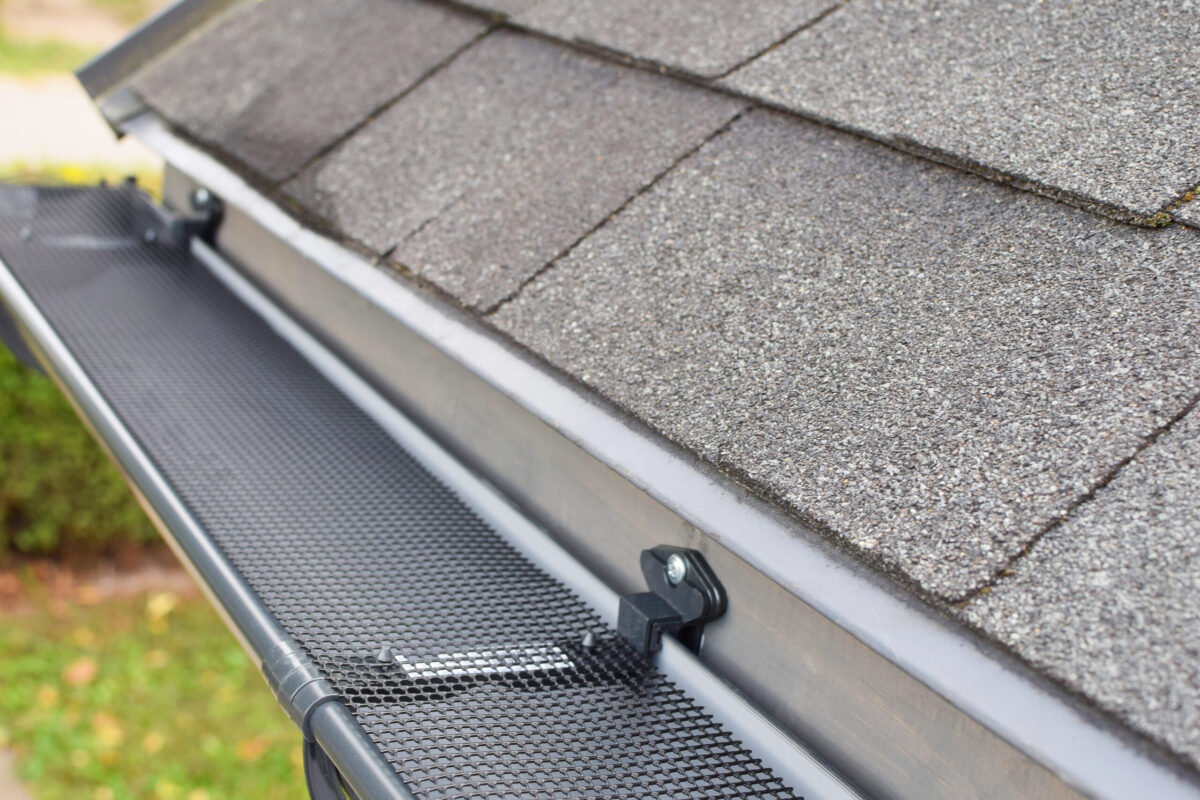What Is Drip Edge On A Roof? (Uses, Functions, Benefits)
8 Min Read
POSTED 03.06.2025

Protecting your roof from the elements is one of the most important steps in ensuring the longevity of your home. Yet, there’s one unsung hero that most people overlook when thinking about roofing components. If you’re unfamiliar with this critical (and surprisingly simple) part of your roof, you’re in the right place.
This article will help you understand what a drip edge is, how it works, and why it’s essential for your roofing system. We’ll also discuss the primary benefits of having one installed. Here’s what you’re about to learn:
- What a drip edge is and how it functions
- Common benefits of installing a drip edge
- Why a professionally installed drip edge matters for long-term roofing success
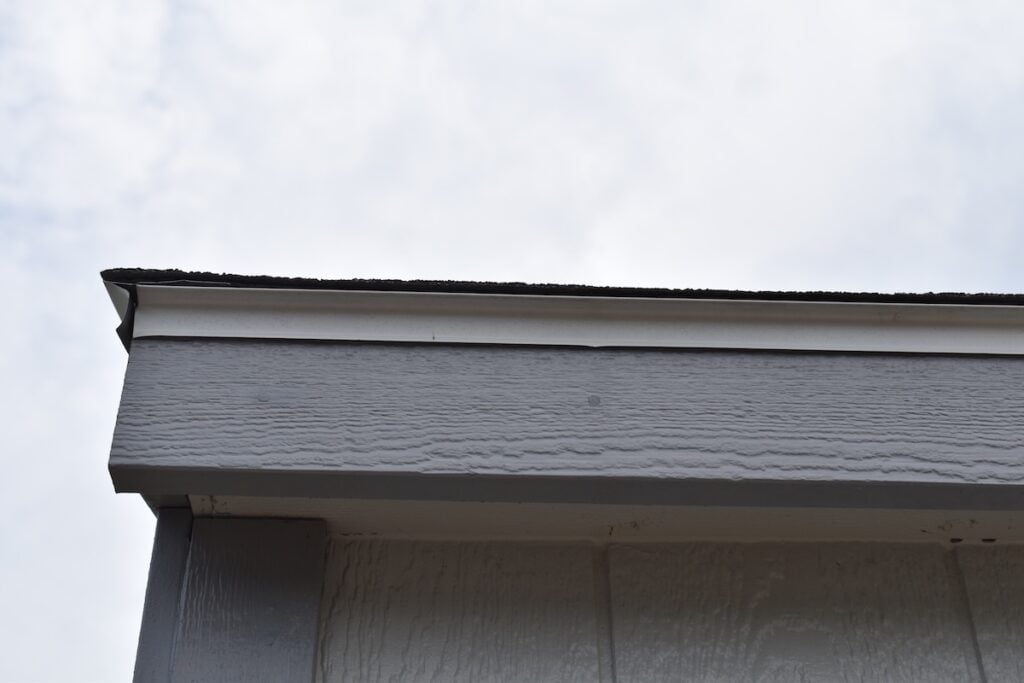
What is a Drip Edge?
A drip edge is a metal flashing that is installed on the edges of a roof. Its purpose is deceptively simple yet highly effective. Positioned beneath your roof’s shingles and extending slightly beyond the edge, the drip edge guides water away from the fascia and into the gutter system. This prevents water from dripping onto other parts of your home that are vulnerable to damage, such as wood trim or siding.
Drip edges are typically made from materials like aluminum, galvanized steel, or copper, ensuring durability and resistance to corrosion. Available in different shapes and sizes, drip edges ensure that your roof stays well-protected while improving its overall performance and lifespan.
How Does a Drip Edge Protect Your Roof?
The effectiveness of a drip edge lies in its straightforward design, which provides several layers of protection for your roof. Here’s how it works:
- Prevents water damage by directing water away from fascia boards and siding, protecting them from rot during heavy rain or melting snow.
- Stops wind-driven rain by creating a watertight barrier that shields against water pushed beneath shingles during severe weather.
- Protects against pests by sealing gaps between the roof’s sheathing and fascia, keeping out birds, squirrels, and insects.
Types of Drip Edge: Styles & Materials Explained
Drip edges come in a few common styles, each designed to manage water runoff and protect your roof in different ways:
1. L-Style (Standard Drip Edge)
Also known as “Type C,” this drip edge has a simple 90-degree angle and is the most common style used in residential roofs. It’s ideal for homes with a steeper pitch, where water runs off quickly.
- Best for: Standard asphalt shingle roofs
- Installation: Under underlayment along eaves, over along rakes
2. T-Style (Type D / D-Metal)
T-Style has a “kick-out” feature that helps channel water away from fascia and into the gutter. It’s often preferred in areas with frequent heavy rainfall or snowmelt.
- Best for: Homes prone to ice dams or with high rainfall
- Installation: Over the underlayment on both eaves and rakes for maximum coverage
3. F-Style Drip Edge
This version has a longer leading edge, offering more coverage and helping to protect siding from water infiltration.
- Best for: Re-roofing projects or where additional siding protection is needed
- Bonus: Great for homes with intricate roof designs
Drip Edge Material Options
- Aluminum: Lightweight and rust-resistant, common and cost-effective
- Galvanized Steel: Stronger, ideal for harsh climates like Wisconsin’s, but can rust if coating wears off
- Copper: Durable and premium-looking, but pricey
Pro Tip: In Wisconsin’s freeze-thaw climate, galvanized steel or T-style edges are often preferred for added strength and moisture redirection.
Drip Edge Types & Cost Comparison
| Drip Edge Type | Ideal Use Case | Material Options | Average Cost (Per Linear Ft) | Durability | Wisconsin Climate Fit | Pro Tips |
|---|---|---|---|---|---|---|
| L-Style (Type C) | Basic residential roofing, budget projects | Aluminum, Painted Steel | $0.75 – $1.50 | Moderate | Good – best with proper underlayment | Affordable and easy to install for most homes |
| T-Style (Type D) | Heavy rain, snow, ice dam protection | Galvanized Steel, Aluminum | $1.50 – $2.75 | High | Best choice for snow-prone areas | Redirects meltwater away from fascia—ideal for Wisconsin winters |
| F-Style | Re-roofing, homes needing extra coverage | Aluminum, Steel | $1.25 – $2.25 | High | Good – shields siding from runoff | Great for upgrades or layered roofing systems |
| Copper | Premium homes, historic renovations | Copper | $4.00 – $7.00+ | Very High | Durable but overkill for most homes | Adds visual appeal but costly for standard roofs |
Wisconsin-Specific Tips:
- T-Style is highly recommended in areas like Madison, Eau Claire, and Green Bay due to frequent freeze-thaw cycles.
- F-Style works well for homes near wooded or lake areas (e.g., Lake Geneva, Northwoods) where gutter clogs are common.
- Local building codes may require drip edge installation under shingles, especially in areas with strict roofing inspections.
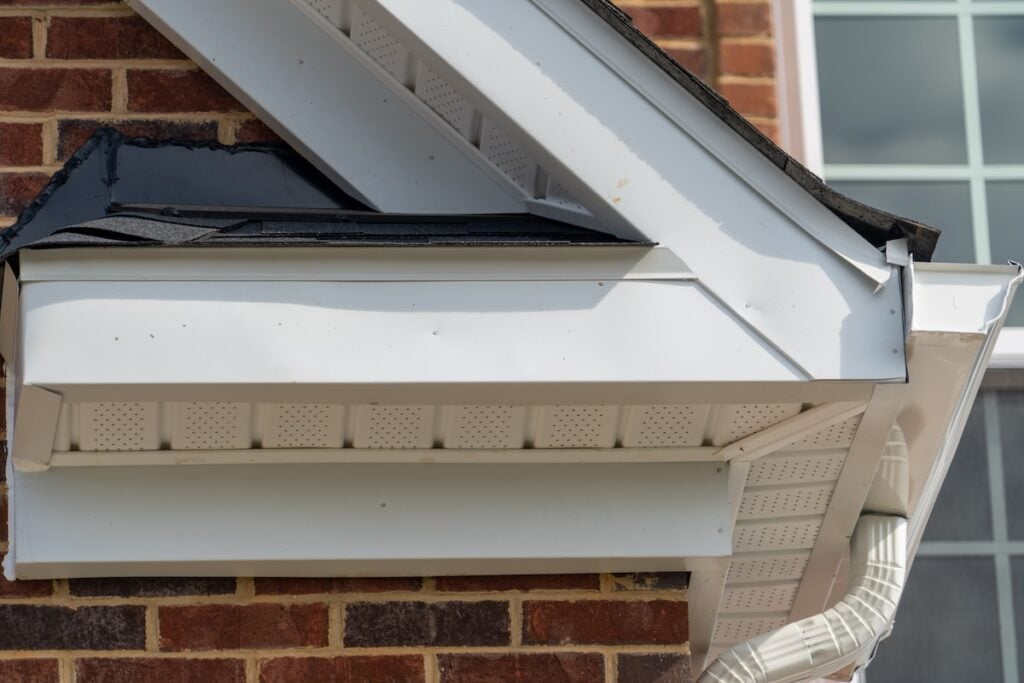
5 Benefits of Drip Edge Installation
Whether you’re installing a new roof or upgrading an old one, drip edge flashing plays a crucial role in long-term roof performance, especially in states like Wisconsin, where snow, ice, and rain can take a toll on rooflines.
Here are the top 5 benefits of installing on your asphalt shingle roof:
1. Protects and Extends Roof Lifespan
Drip edge flashing forms a protective barrier that prevents water from seeping beneath shingles and damaging the roof deck or fascia. In freeze-thaw climates like Wisconsin, moisture that gets under shingles can quickly lead to rot, mold, and structural decay.
- Without: You risk premature deterioration of your roof.
- With: You significantly reduce moisture exposure and help your roof last longer, often by several years.
2. Reduces Costly Maintenance and Repairs
Water damage is one of the top causes of roof-related repair costs. By directing water into gutters instead of letting it run behind fascia boards, a drip edge minimizes:
- Soffit and fascia rot
- Ice dam leaks
- Underlayment wear and tear
Result: Less frequent repairs and a lower total cost of ownership for your roof.
3. Improves Gutter Efficiency and Drainage
Without a drip edge, water can bypass your gutters entirely spilling over the edge or backing up behind them. This can cause:
- Soil erosion
- Foundation damage
- Water stains on siding
A well-installed drip edge guides water cleanly and directly into the gutter system, ensuring maximum drainage efficiency and reduced clogging.
4. Enhances Curb Appeal
Modern drip edges come in a variety of finishes and colors, adding a clean, defined edge to your roofline. When professionally installed, they:
- Create a neat, polished border
- Match or contrast your roof color
- Conceal minor shingle inconsistencies at the edges
This subtle design element boosts curb appeal and can even contribute to higher perceived home value.
5. Complies with Building Codes
In many regions, including Wisconsin municipalities following IRC standards, drip edges are no longer optional. They’re a code requirement for new roofs and most reroofing jobs.
Installing one ensures:
- Inspection compliance
- Reduced homebuyer pushback during resale
- Increased home protection during severe weather
If you’re replacing your roof, skipping the drip edge may fail inspection or void warranties.
Why Drip Edge Matters in Wisconsin’s Climate
Wisconsin homeowners face unique challenges due to extreme seasonal changes: icy winters, spring thaw, and heavy summer rains. Here’s why proper drip edge installation is especially important in this region:
1. Ice Dams & Freeze-Thaw Cycles
In winter, warm attic air can melt rooftop snow, which refreezes near the eaves, forming ice dams. Without a drip edge, this meltwater can back up under shingles and damage the roof deck or interior.
- Solution: T-style drip edge helps redirect runoff into gutters, reducing buildup
2. Heavy Rainfall & Gutter Overflows
Wisconsin gets over 30 inches of rainfall annually. A poorly installed or missing drip edge lets water seep behind fascia boards, causing rot, mold, or leaks inside walls.
- Solution: Properly angled drip edge ensures runoff flows into gutters, not your home
3. Leaves and Debris
In wooded areas or near lakes, homes collect more debris in gutters. Drip edges act as a buffer, preventing water from wicking back into the roof when gutters are full.

Why Hire Professionals to Install a Drip Edge?
Installing edge flashing may seem straightforward, but precision matters. When improperly fitted, this protective detail can fail to channel water correctly leading to rot, leaks, or structural damage over time. That’s why expert handling is key.
High-Quality Roofing Services at Badgerland Exteriors
At Badgerland Exteriors, we specialize in roofing systems built to withstand Wisconsin’s demanding climate. From material selection to the final layer of protection, our work is rooted in craftsmanship, durability, and local experience.
Precision That Safeguards Your Roof
Our team is skilled in fitting edge flashing that does more than meet code it defends your home against moisture intrusion and ice damming. Whether part of a full roof replacement or a targeted repair, we ensure seamless integration with your existing system for lasting results.
Comprehensive Roof Inspections
Every project starts with a comprehensive inspection. We examine all vulnerable zones from eaves to valleys to ensure any water management features are properly aligned with your roof’s structure and slope. This allows us to deliver tailored solutions, not one-size-fits-all fixes.
Built for Longevity and Performance
Great roofing isn’t just about shingles. It’s about how every component works together. From gutters to flashing and underlayment, we take a systems-based approach to installation. Our attention to detail means fewer repairs, better protection, and peace of mind through every season.
Drip Edge For A Roof
At Badgerland Exteriors, we understand the importance of every detail when it comes to protecting your home, and a properly installed drip edge is no exception. With years of experience and a dedication to quality craftsmanship, our team takes pride in delivering roofing solutions that stand up to Wisconsin’s toughest weather.
When you choose Badgerland Exteriors, you’re choosing a trusted partner committed to keeping your home safe and secure. Ready to take the next step? Contact us today to schedule your free inspection and see the difference our expertise can make for your home.
Let’s Get Started
Fix Your Roof the Badger Way
Got a question? Want to learn more about your options when it comes to caring for your home exterior? Our team is standing by with the information you need to start you roof replacement project today!

